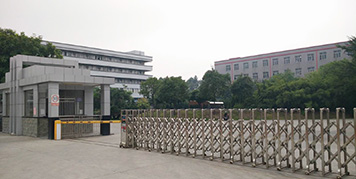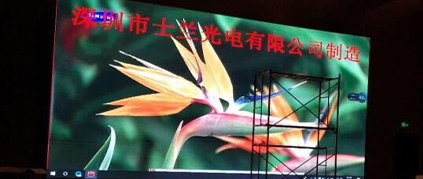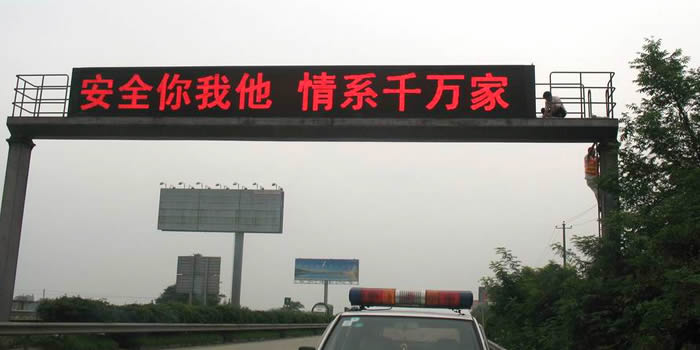Small spacing LED compared the advantages and disadvantages of the traditional display summary
Update:2016-09-03 13:15:00
Traditional large-screen display mode: DLP splicing wall, LCD (liquid crystal), projection (projection) fusion splicing wall, large size liquid crystal display screen.
A, the characteristics of different display mode:
Small spacing LED compared the advantages and disadvantages of the traditional display summary. JPG
Second, the advantages and disadvantages of different display technologies:
1. The problem of flat-fell seam. LCD and PDP has flat-fell seam problem, DLP slightly better, projection fusion when handled well able to rid of stitching area; Small spacing no flat-fell seam LED display technology.
2. The display effect. From the gray level and contrast, brightness and refresh rate index, DLP rear projection and projection and the effect of fusion technology shows the worst (determined by the physical properties of projection the worst), LCD display effect is good, but after using for a long time, because of the brightness attenuation and appear dark side, black Angle, also can appear between the screen and screen brightness and color difference, and the human eye is sensitive to different things;
LED display technology of gray level and contrast, the indexes of the refresh rate is very good, also can be corrected through point by point easily solve the problem of weak light, but the biggest problem lies in two points: (1) dead lamp: the death of the outdoor LED display lamp rate standard generally is one over ten thousand to three over ten thousand, but small spacing LED standard need to drastically improve, take the P2.5 specifications of the small distance between the LED display screen as an example, its total of 160000 per square meter lamp bead; If further to a level 1 mm spacing, every square metre is 1 million lamp bead, if at this time, in accordance with the LCD screen "not more than three bad points" standard requirements, LED display almost beyond death light rate can be reduced to three over one million. (2) the contradiction of brightness and gray: indoor and outdoor applications is one of the most significant changes in ambient light. In outdoor LED display applications, high intensity of sunlight during the day, so, outdoor LED display need to be bright, bright, bright! The higher the brightness of the display, the display of the higher technical specifications. For the interior, because often need long time watching the screen, the brightness of the LED display should be greatly reduced, the reference domestic TV brightness range is 350 CD / ㎡ to 500 CD / ㎡; The brightness of the DLP splicing wall range is 250 CD / ㎡ to 400 CD / ㎡; The brightness of the LCD splicing wall range is 450 CD/CD / ㎡ - 700 ㎡. LED light as a spontaneous display technology, and passive light is different, the human eye is more sensitive, so you need to lower the brightness of the human eye to be comfortable. LED display needs to be less than 300 CD/square metre, can achieve the human eye is the best viewing (internationally recognized standards are, more than 700 CD/m2 brightness watch will cause harm to human health, in addition, some special application fields for more demanding high "low light grey", such as a television studio and sometimes require display brightness within 100 CD/m2), through small spacing on the market at present LED display specification, it is not difficult to find that the existing display luminance brightness there is a big gap with the practical application. To Beijing a little distance between the LED products listed company as an example, the company's website clearly marked the small spacing of the specifications of the products, LED brightness values greater than 1200 CD / ㎡, far above the comfort range. Industry specialized testing experts to multiple small spacing LED display a large number of actual test found that when the display brightness down to 500 CD / ㎡ or even some down from 600 CD / ㎡, images have been appeared more obvious gray scale loss phenomenon. Along with the brightness of the further reduced, gray scale loss is becoming more and more serious. And when the brightness down to under 200 CD / ㎡, most of the display screen of the gray scale loss is great, almost to the extent of the "ugly" quality. So how to under 300 CD/m2 brightness levels to realize gray minimum loss, is a threshold for LED display application enterprise, this also is the moat of outstanding enterprises.
3. The resolution. DLP, LCD has higher resolution, 60 inches single hd display unit resolution can reach 2 k, and the small distance between the LED display technology due to the pixel is made up of lights, so on the premise of cost control, the resolution is lower than other techniques. Such as display and the resolution of the signal source matching problem, used for advertising in areas such as outdoor LED display don't need to have standard resolution, customer only care about display effect and brightness. Small spacing between the LED display after entering indoor application, the downstream applications rapidly expand, such as command, control, monitoring and other fields, often need to display to match the output of each subsystem is standard resolution signal, for example 1920 x 1080 signal of high-definition cameras, etc. And within the prescribed size, standard LED display cabinet resolution may not be able to piece together the required standards.
4. Cost problem. In all indoor large screen display solutions, and the lowest cost is LCD splicing and projection and fusion (because the cheapest LCD splicing wall accounted for the lion's share in the field of indoor display), followed by the PDP splicing. Compared to the small distance between the LED display and DLP rear projection splicing, hardly what does tall what is low, because of different spacing between the specifications of the LED display, small spacing cost difference is larger, the current P1.9 display and sale price per SQM DLP rear projection splicing quite, but the account of the differences of gross margin, even higher than DLP Mosaic products. For material benefit is the highest of industry users, on the premise of meet the application requirements, consider cost-effective integrated, small spacing leds may not be preferred. Has always been the high cost is the main problem with small spacing LED, although small spacing LED has many advantages. But as the market continuously, small spacing LED technology of rapid ascension, technology cost is greatly reduced. Under the current P1.2 commercial product cost is too high, users still can't afford to. This also means that, before the current LED the innovation of technology without big, small spacing, cannot be popularized.
5. The service life. From the point of use time length, pure LED display technology has the longest service life, because indoor applications, the LED display brightness demand is very low, 20% maximum output power can meet the requirements.
Third, the competition between different display mode.
1. The small distance between leds VS DLP joining together: a small distance between the LED screen in flat-fell seam, luminance, color saturation, resolution, more advantages in such aspects as application flexibility; While DLP splicing wall in the picture is exquisite, cost, etc. The two technologies will be formed in the high-end indoor market face to face with competition;
2. The small distance between the LED vs. LCD splicing: small spacing LED screen has significant seamless, longevity, flexibility advantage; But the LCD splicing also have advantages in price, the picture is exquisite degree. Affected by factors such as price, however, at present, small spacing LED screen will be focusing on high-end market, while the LCD splicing mainly aimed at the low-end market, so the competition is not very prominent;
3. Small spacing LED VS projection fusion: a small distance between the LED screen in the color saturation, late life, maintenance, demand for accessory equipment has advantages, and to use the environment request is not high; Fusion and projection system has higher brightness, and a certain price advantage, especially in the creative projection display has an irreplaceable position. Therefore, the two sides do not form a substitute each other, small spacing of LED screen or in a particular application scope of the project into the projector display challenges;
4. Small spacing LED VS large size LCD: in contrast with large size LCD single, large size liquid crystal display products, so-called covered limited in 70-110 - inch size category, while the small distance between the LED screen can reach 70 feet from the theory of unlimited size category, small spacing wider size LED products category, the ability to meet the market demand is stronger. But in the LCD can be implemented within the display size, LCD screen delicate degree has obvious advantage, at the same time, most products are cheaper. The competition has significant differentiation, also has a certain contradiction, not replace each other relations, but in the face of the different needs of complementary relationship.
In terms of the present, for small spacing LED display products, and maturity in indoor applications want higher liquid crystal splicing, DLP joining together a relatively high and low, an urgent need to break and is not only a technical bottleneck, but in the case of a temporarily unable to reduce cost of a product, how to ensure that users to maximize the investment value, after all, only the "value" or "value", only the most conforms to the consumer psychology of consumers.
At present because of the cost of the problem, the small distance between the LED application is still focused on high-end application market, but with the increase of investment, cost problem won't be long time problem in industry, and for part of the demand effect prior to the application costs.
But we have also seen, although the rise time is not long, but the small distance between the LED display industry "is easier than the results into the door" situation has begun to appear.






